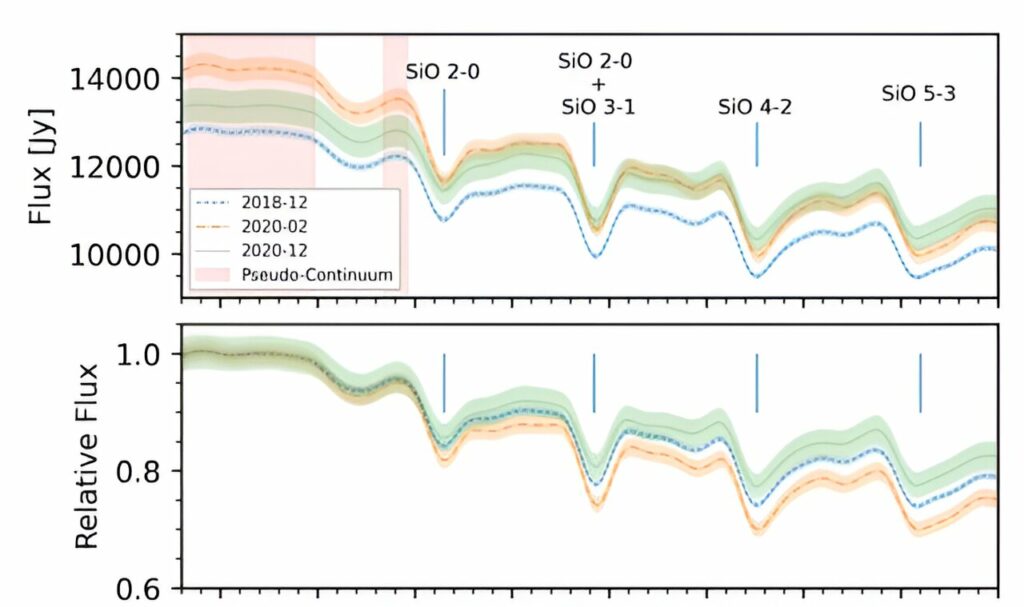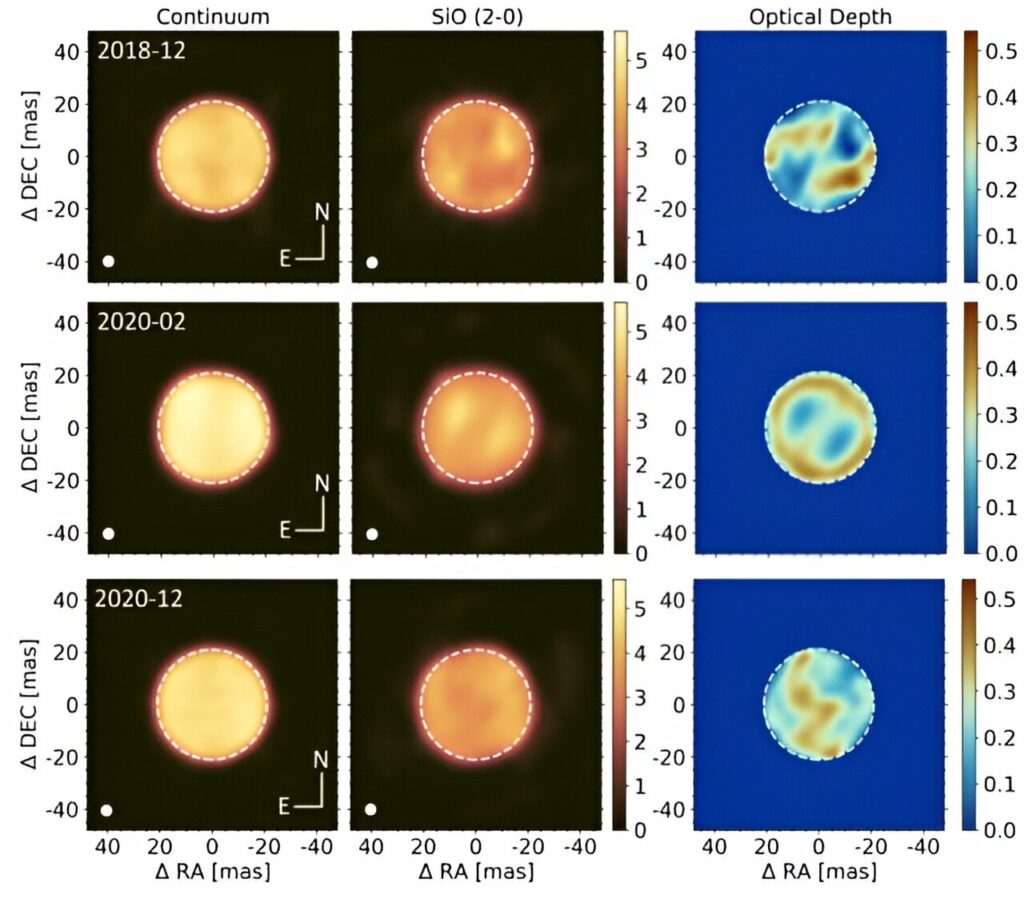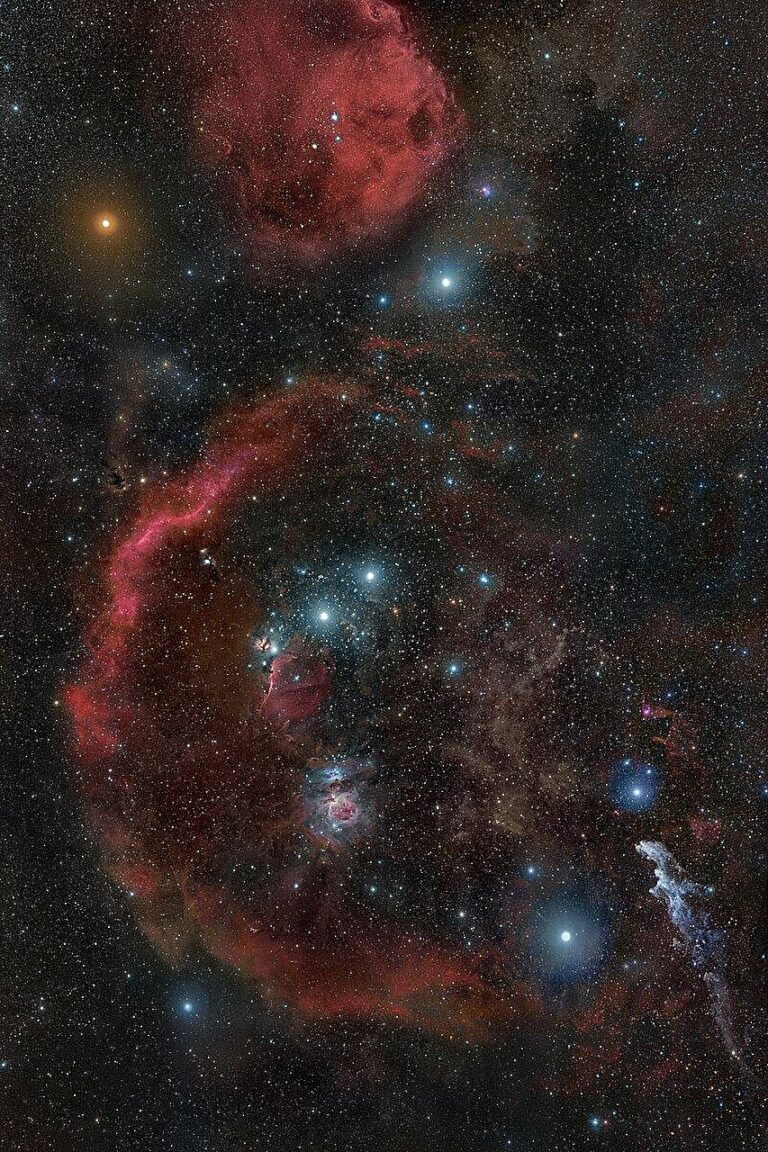Betelgeuse: Preceding, During, and Post the Significant Dimming Event
The dimming of the red supergiant star Betelgeuse between November 2019 and May 2020 did not signal an imminent explosion. Recent research has shed light on the cause of the dimming, which was not related to a supernova. Instead, it was determined that dust ejected from the star itself was responsible for the decrease in brightness.
A research letter titled “Images of Betelgeuse with VLTI/MATISSE across the Great Dimming” presents infrared observations of Betelgeuse, taken before, during, and after the Great Dimming Event (GDE). The lead author of the research is Julien Drevon from the Université Côte d’Azur, France, and the European Southern University.
The research letter explains that mid-infrared long-baseline spectro-interferometric measurements were used to study Betelgeuse, with a focus on silicon monoxide (SiO). The authors of the research outline three steps in the process that led to the GDE.

Step one
The GDE commenced with internal disturbances occurring within Betelgeuse, resulting in the emergence of a convective outflow of plasma that transported matter to the star’s surface. In February 2018, scientists identified a robust shock, followed by a less intense shock in January 2019. The subsequent weaker shock amplified the impact of the preceding stronger shock, leading to a gradual flow of plasma on the photosphere of Betelgeuse.
Step two
The plasma flowing to the photosphere’s surface created a hot spot. Hubble UV observations of Betelgeuse revealed the presence of a luminous, hot, dense structure in the star’s southern hemisphere, between the photosphere and the chromosphere.
Step three
Stellar material separates from the photosphere and gives rise to a gas cloud situated above the surface of Betelgeuse. Below this cloud, a colder area forms, appearing as a dark spot. Due to the lower temperature, dust is able to condense above this region and within the corresponding part of the cloud. This dust is responsible for obstructing a portion of Betelgeuse’s luminosity, resulting in the occurrence of the Great Dimming Event (GDE).
The GDE has been previously studied, revealing a three-step process. The authors of the recent research article aimed to observe the immediate circumstellar environment of Betelgeuse in order to investigate and monitor its geometric properties. Within the wavelength range they focused on, SiO spectral characteristics are prominent and serve as a means to comprehend the events surrounding the red supergiant. In the field of astronomy, SiO is utilized as a tracer for shocked gas in stellar outflows, as it remains stable at high temperatures.
 This figure from the research article explains some of what the researchers found. The middle column is particularly interesting because it’s a reconstruction of the SiO (2-0) absorption band onto Betelgeuse’s surface for each of the three observed epochs. The third column is similar but shows the SiO (2-0) optical depth. Overall, they constrain the geometry of the dust feature that caused the GDE. Credit: J. Drevon et al. 2024The authors of the article focus on the significance of the SiO (2-0) band. They highlight that during the Great Dimming Event (GDE), the intensity contrast of the band increases by 14%. This implies that brighter structures are observed in the line of sight during the GDE.
This figure from the research article explains some of what the researchers found. The middle column is particularly interesting because it’s a reconstruction of the SiO (2-0) absorption band onto Betelgeuse’s surface for each of the three observed epochs. The third column is similar but shows the SiO (2-0) optical depth. Overall, they constrain the geometry of the dust feature that caused the GDE. Credit: J. Drevon et al. 2024The authors of the article focus on the significance of the SiO (2-0) band. They highlight that during the Great Dimming Event (GDE), the intensity contrast of the band increases by 14%. This implies that brighter structures are observed in the line of sight during the GDE.
Furthermore, the authors mention a 50% decrease in intensity contrast in December 2020. This decrease indicates that there have been strong temporal variations in the SiO (2-0) opacity depth map over the course of two years. These variations suggest vigorous changes in the star’s environment during this time period.
Additionally, the authors discuss their observations of an infrared excess in the pseudo continuum during the GDE. This excess has been interpreted as the formation of new hot dust.
These findings indicate that the Great Dimming of Betelgeuse is no longer a mystery. It also supports the principle of Occam’s Razor, which states that the explanation requiring the fewest assumptions is usually correct.
While the possibility of Betelgeuse eventually exploding as a supernova was entertaining, the authors suggest that there will likely be more episodes of dimming before that happens. Currently, they state that the star is returning to a gas and surface environment similar to what was observed in December 2018, albeit with smoother structures possibly due to the recent formation of dust during the GDE.
This article is republished from PhysORG under a Creative Commons license. Read the original article.
Do not forget to share your opinion with us to provide you with the best posts !





0 Comments